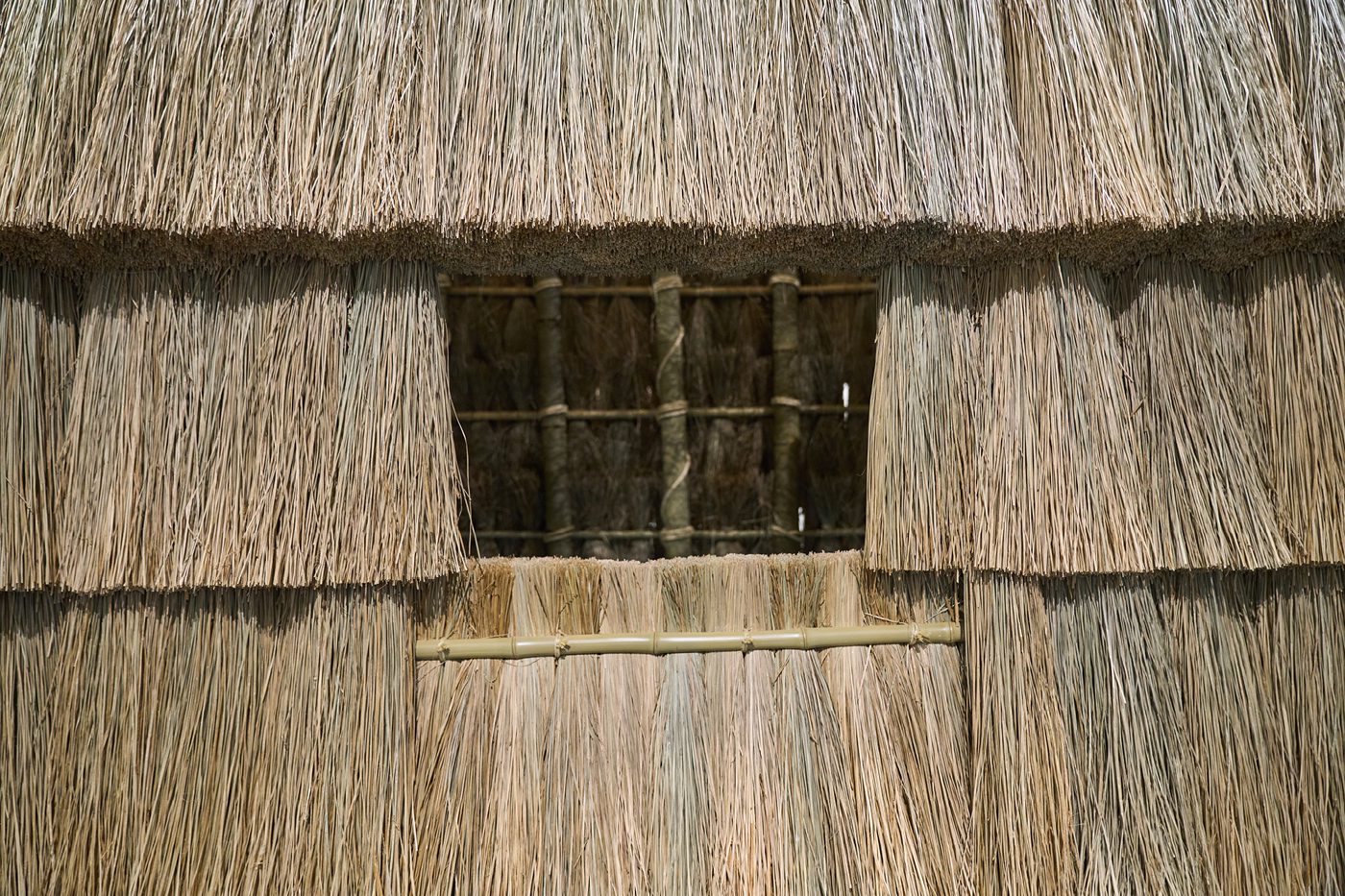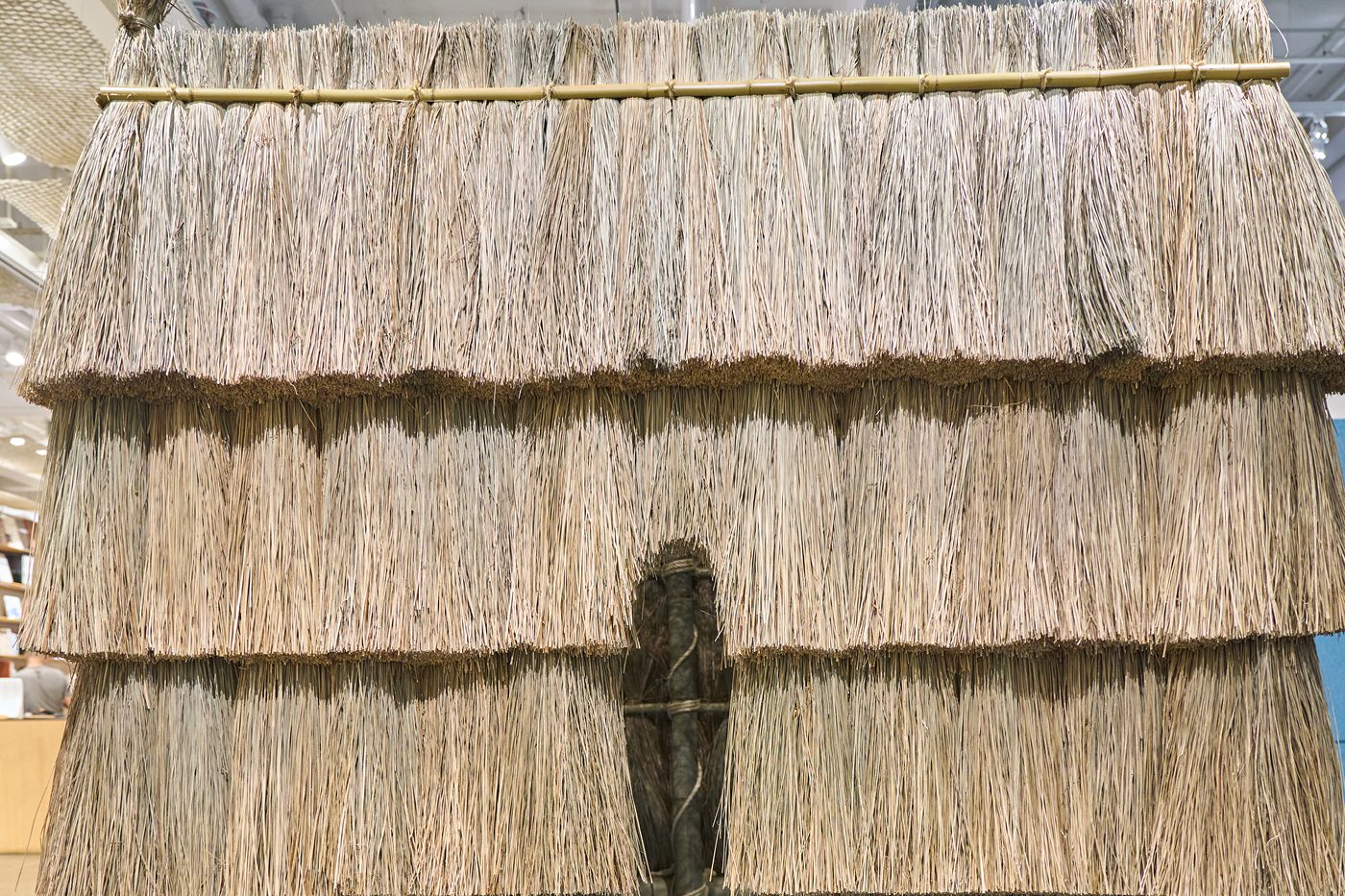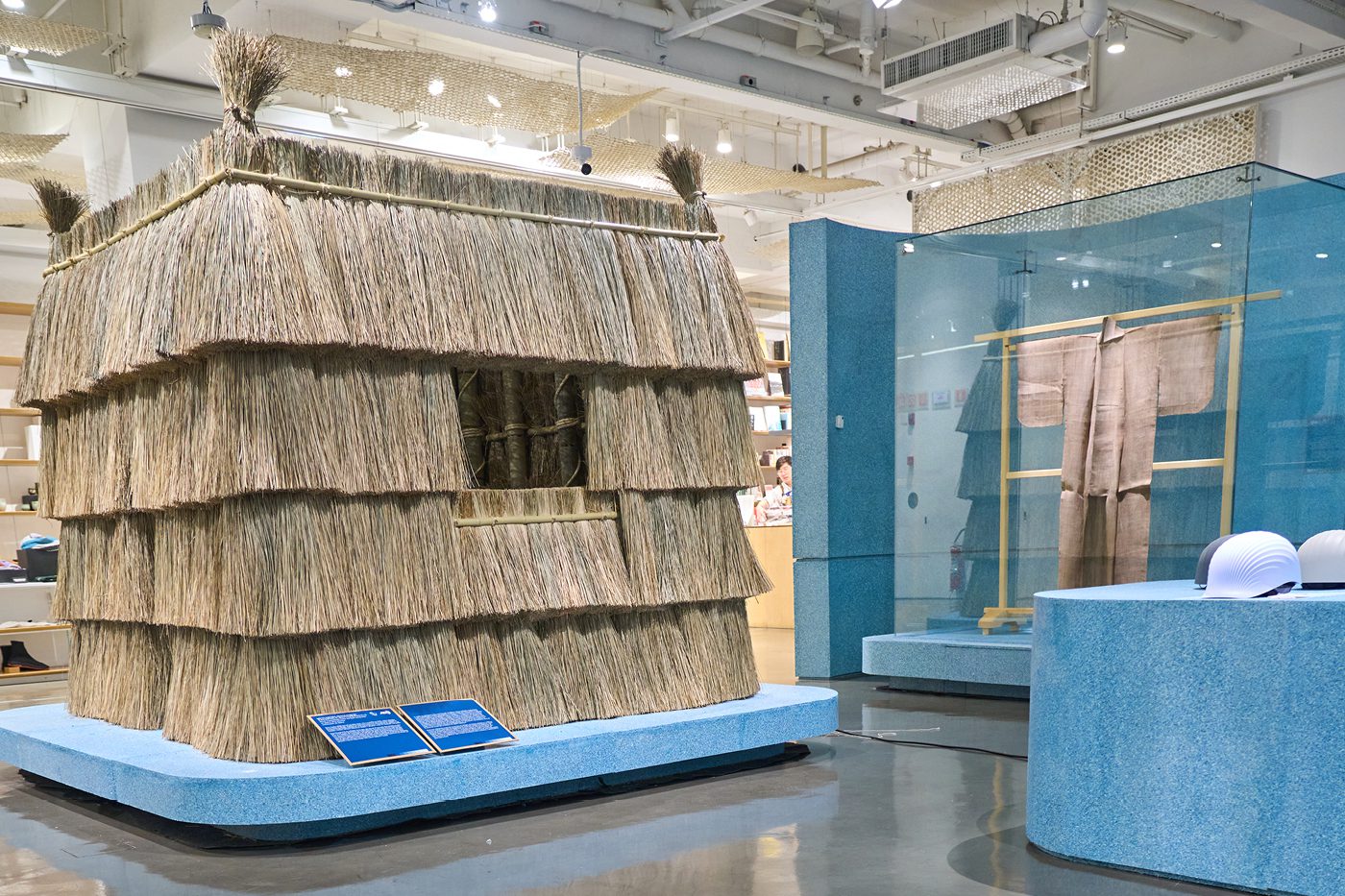Project development: Brazil
IKUYA SAGARA, KUSAKANMURI
生まれながらにして、還るところが約束されている
From birth there is a promised place to which one must return
construction of reed, bamboo and sisal rope
Ikuya Sagara (1980) was born in Kōbe, Hyogo Prefecture, where he lives and works. Sagara is a craftsman of kayabuki (traditional Japanese thatched roofs), and his work consists of making, preserving, teaching, and promoting the art of thatched construction.
There are records of this type of roofing described in the two oldest books on Japanese history, the Kojiki and Nihon Shoki, both compiled in the 8th century, demonstrating its long history. In the 1960s, more than 5 million buildings using thatch were recorded in Japan. However, by 2010, this number had dropped to 100,000, a warning of changes in construction methods and the use of other materials, such as metal. The decline in this type of construction makes it difficult to perpetuate a traditional technique. With less demand, artisans' work becomes scarce, as does the interest of young people in learning the craft, impacting a cultural and social chain.
The region where Sagara lives preserves 700 examples of these traditional roofs, which motivates him to maintain his work while also seeking ways to promote and explore the potential of these plants and their benefits. These roofs ensure great thermal comfort, with good sunlight and ventilation; they are water-resistant; they can be made from raw materials that are currently available or typical of a given location; and all the elements that make up their structure are biodegradable: straw, bamboo, and rope. Traditionally, rice is prevalent in these constructions, as its history is tied to the development of Japanese culture, and it also serves as an example of the maximized use of a resource: its straw, husk, and bran have various uses in crafts and industry, and the grain is used in spiritual ceremonies.
The construction presented here was developed specifically for the exhibition "Japanese Principles: Design and Resources," at Japan House São Paulo. The artisan drew inspiration from ancestral Japanese shelters and used reeds, a species grown in abundance in the São Paulo municipality of Registro, to minimize environmental impacts by utilizing readily available raw materials. He explores Japanese techniques and craftsmanship while reflecting on the need for responsible cycles. Observing the environment, he perceives how the experiences and needs of an individual or community can establish a sustainable relationship with nature, regenerating it to preserve it.




